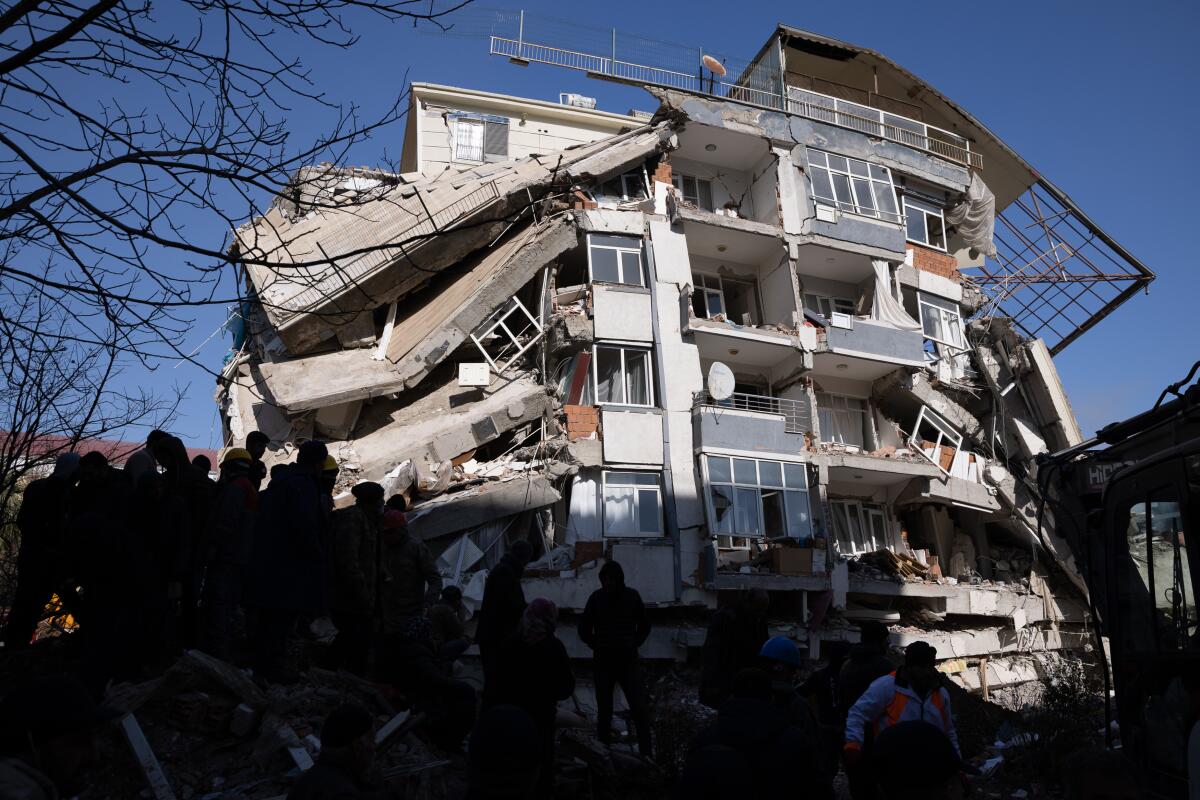A powerful earthquake registering magnitude 6.1 recently struck a region in Turkey, resulting in significant structural damage, including the collapse of approximately a dozen buildings. The seismic event, felt across a wide area, has prompted emergency responses and raised concerns about the safety of infrastructure in earthquake-prone zones throughout the country.
Turkey’s geographical location along major fault lines makes it susceptible to frequent seismic activity. This latest quake serves as a reminder of the persistent risks faced by communities in these vulnerable regions, where preparedness and resilient construction are critical to minimizing loss of life and property damage.
The earthquake occurred during the early hours, catching many residents off guard while they were asleep. The sudden shaking caused panic and chaos as people scrambled to find safety amid falling debris and power outages. Local authorities quickly mobilized rescue teams to assess the damage, conduct search-and-rescue operations, and provide aid to those affected.
Preliminary assessments suggest that the downfall of approximately a dozen structures resulted in multiple victims, although rescue teams are still determining the precise count of those harmed or deceased. Numerous people were caught beneath the debris and needed immediate evacuation by expert crews employing heavy machinery and skilled search dogs. Medical centers in neighboring towns have been put on heightened alert to handle a possible increase in individuals requiring care for injuries and other earthquake-related conditions.
Along with the direct impact on people, the earthquake resulted in extensive disruption to services like power, water, and communications. Many locals faced electricity outages, hindering both emergency operations and everyday activities. Crews were sent to fix services promptly, although authorities caution that complete restoration might need several days, influenced by the severity of the destruction.
Ingenieros estructurales y funcionarios gubernamentales han comenzado a revisar otras edificaciones en la región afectada para evaluar su estabilidad y seguridad. Numerosas construcciones antiguas que no fueron diseñadas según los estándares modernos de resistencia a terremotos han revelado debilidades, lo que ha impulsado debates sobre la importancia de implementar códigos de construcción más rigurosos y actualizar la infraestructura existente.
Turkey has experienced catastrophic earthquakes in its history, with previous incidents causing numerous fatalities and substantial damage. Insights gained from these disasters have enhanced emergency readiness and construction codes, but obstacles persist in enforcing adherence and safeguarding every community adequately. The latest tremor underscores the persistent need for progress in these initiatives.
Seismologists observing the area have reported that the 6.1 magnitude tremor was followed by several aftershocks, some of which were powerful enough to increase worry among locals and officials. Aftershocks can further compromise already damaged buildings and continue to present hazards, making it crucial to stay alert in the days after the initial earthquake.
Public safety officials have issued guidelines urging citizens to stay alert for further tremors, avoid damaged buildings, and prepare emergency kits with essentials such as food, water, medications, and flashlights. Schools and businesses in the vicinity have temporarily closed as precautionary measures, and community centers are being set up to assist displaced individuals and provide information.
The government has pledged to provide support and resources to affected areas, including financial aid for reconstruction and mental health services for those traumatized by the event. Efforts are underway to coordinate with humanitarian organizations to ensure that vulnerable populations, including the elderly and children, receive adequate care.
The effects of the earthquake have also captured the interest of global organizations and nearby nations, leading to offers of support and messages of unity. Joint efforts in disaster response and readiness remain a priority in the area, highlighting the need for international collaboration in handling natural catastrophes.
In the wake of such events, specialists highlight the importance of educating the public on preparedness and reactions to earthquakes. Populations that are informed on what steps to take during and following a tremor often face fewer losses and bounce back more swiftly. Practice drills, awareness campaigns, and easily accessible emergency supplies are key parts of Turkey’s approach to disaster management.
As rescue and recovery operations proceed, the focus remains on saving lives and stabilizing the affected communities. Longer-term rebuilding will require significant investment and commitment to resilient infrastructure, urban planning, and continuous monitoring of seismic activity. The lessons learned from this event will inform future policies aimed at reducing vulnerability and enhancing safety across Turkey’s diverse landscapes.
While natural disasters cannot be prevented, mitigating their effects through preparedness, strong governance, and community engagement can save countless lives. This recent earthquake serves as a sobering reminder of the power of nature and the ongoing need for vigilance in regions where seismic hazards are a constant reality.
Authorities continue to urge residents to report any damage or safety concerns and to stay informed through official channels. The coming days will be critical as aftershocks subside and recovery efforts intensify, with hopes that the community will emerge stronger and more resilient in the face of future challenges.

